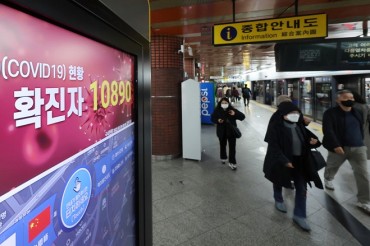
Many of the containers were filled with trash and other waste, and some of the containers were either dented or rusted. (image: Busan Port Authority)
BUSAN, Dec. 26 (Korea Bizwire) — A new investigation has confirmed that there is a serious problem with empty shipping containers arriving at the Port of Busan, which are often found to be in poor condition, doubling the workload for truck drivers, who are responsible for transporting them but also cleaning or repairing them.
The Busan Port Authority (BPA) and the Busan Regional Office of Oceans and Fisheries, in a one-month joint inspection with the Quarantine Inspection Agency and the Korea Customs Service of all empty containers arriving at Busan New Port wharves 1 to 3, found that 51 percent of 5,478 containers brought in from overseas were in poor condition.
Many of the containers were filled with trash and other waste, and some of the containers were either dented or rusted.
Most of these containers had to be cleaned and repaired by truck drivers before being brought to local shippers. Some containers even had to be replaced.
The inspectors also found spiders, maggots, cockroaches, and other bugs in eight containers.
As the number of faulty containers is increasing, truck drivers are spending more time cleaning or repairing the containers.
This may lead to fatal consequences with drivers speeding or being deprived of sleep as they try to bring the containers to the shipper on time.
In addition, cleaning the containers without knowing what they had been holding previously could possibly threaten the health of the drivers.
Containers arriving from Jamaica had the highest faulty rate of 70 percent, followed by Canada (64 percent), the United Arab Emirates (59 percent), Mexico (55 percent), the United States (53 percent), Singapore (50 percent), Panama (48 percent), India (46 percent), Russia (41 percent), Japan (33 percent) and China (33 percent).
The faulty rate among redistributed containers within South Korea was 39 percent, which was lower than the average of overseas containers.
Redistributed containers are those returned by South Korean companies after stored imported goods have been removed, after which the containers are stored at wharf storage yards until they are redistributed to export companies.
The BPA and the Busan Regional Office will analyze which area of which country the inflow of faulty containers is concentrated on, as well as foreign procedures for processing empty containers, to deliver detailed plans for improvement by February of next year.
Lina Jang (linajang@koreabizwire.com)






